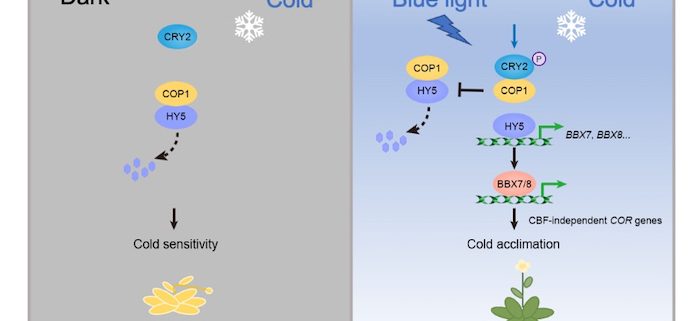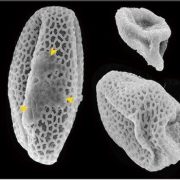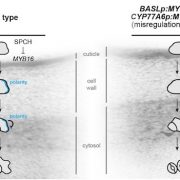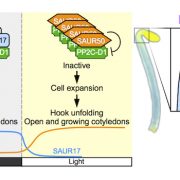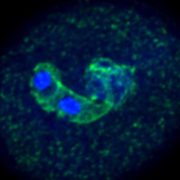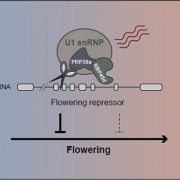Winter is coming: It’s time to “CRY”
Li et al. reveal how the cryptochrome CRY2 regulates freezing tolerance in Arabidopsis. https://doi.org/10.1093/plcell/koab215
By Youping Li
Background: Cold acclimation via exposure to non-lethal low temperatures enhances frost resistance in plants. This process requires light; however, we know very little about the underlying mechanism. The red light photoreceptor phyB functions as a thermosensor to perceive temperature changes of 10-30°C in Arabidopsis thaliana, and it also regulates plant freezing tolerance, at least partially through a well-known CBF cold signaling pathway. Moreover, photoperiod and light quality modulate plant responses to cold stress via phytochromes. The blue-light receptor phototropin is thought to perceive the cold signal (4°C) by regulating the half-life of its phosphorylated active form in the liverwort Marchantia polymorpha.
Question: What are the effects of different colors (wavelengths) of light on plant freezing tolerance? Beside red-light receptors, are other photoreceptors (e.g., blue light receptors) involved in regulating plant freezing tolerance?
Findings: We show that phosphorylated forms of cryptochrome2 (CRY2) induced by blue light are stabilized by cold stress and that cold-stabilized CRY2 competes with the transcription factor HY5 to suppress its interaction with the ubiquitin ligase COP1, thereby allowing HY5 to accumulate under cold conditions. Furthermore, our data demonstrate that the transcription factor genes BBX7 and BBX8 function as direct HY5 targets to positively regulate plant freezing tolerance by modulating the expression of a set of COR (cold-responsive) genes, mainly in a CBF-independent manner. Our study uncovers a mechanistic framework by which CRY2-mediated blue-light signaling enhances plant freezing tolerance, thus shedding light on the molecular mechanisms underlying the crosstalk between cold and light signaling pathways in plants.
Next steps: With increasingly harsh climate conditions, scientists want to develop smart crops that better adapt to adverse environmental conditions. Our findings shed light on how plants adapt to light and temperature changes. Further study will dissect whether cryptochromes act as cold sensors to perceive cold signals directly. Moreover, the regulatory mechanism of the stability of phosphorylated CRY2 at low temperature remains to be further studied.
Reference:
Youping Li, Yiting Shi, Minze Li, Diyi Fu, Shifeng Wu, Jigang Li, Zhizhong Gong, Hongtao Liu, and Shuhua Yang (2021). The CRY2-COP1-HY5-BBX7/8 module regulates blue light-dependent cold acclimation in Arabidopsis. Plant Cell. https://doi.org/10.1093/plcell/koab215


